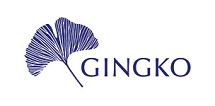Distributed for Gingko
Nationalism in Architecture of Modern Iran
A historical account of the development of nationalism in Iranian architecture between 1905 and 2015.
Nationalism in Architecture of Modern Iran is the first comprehensive book on modern architecture in Iran to be published in English. It addresses the relationship between nationalism and architecture in Iran and discusses the role Western architects played in the development of modern architecture in the country while introducing some of the most significant and recent projects in Iran. It investigates what it means to design a building that bears an Iranian or Islamic-Iranian identity and how to construct a conceptual platform for critically assessing representations of national identity in contemporary architecture. This book will directly help practicing architects and policymakers of the built environment, especially in Iran, as well as give a comprehensive understanding of the modern history of architecture in Iran to art historians and a broader audience. It introduces some of the most significant and recent projects in Iran for the first time.
Nationalism in Architecture of Modern Iran is the first comprehensive book on modern architecture in Iran to be published in English. It addresses the relationship between nationalism and architecture in Iran and discusses the role Western architects played in the development of modern architecture in the country while introducing some of the most significant and recent projects in Iran. It investigates what it means to design a building that bears an Iranian or Islamic-Iranian identity and how to construct a conceptual platform for critically assessing representations of national identity in contemporary architecture. This book will directly help practicing architects and policymakers of the built environment, especially in Iran, as well as give a comprehensive understanding of the modern history of architecture in Iran to art historians and a broader audience. It introduces some of the most significant and recent projects in Iran for the first time.
360 pages | 42 halftones, 6 line drawings, 5 maps | 6.14 x 9.21 | © 2023
Architecture: Middle Eastern, African, and Asian Architecture
Art: Middle Eastern, African, and Asian Art
Political Science: Political and Social Theory
Table of Contents
1. Architecture, the Rise of Nationalism and the Early Reforms
Qajar Tehran
The Development of Nationalism in Iran
Saramadan-e Honar: A Blueprint for National Architecture
From the Parade Ground to the National Garden (1925–34)
2. Politics and the Production of Architectural Knowledge
The Past as Heritage: The Society for National Heritage (Anjoman-e Asar-e Melli)
An Awakening Lecture
Ferdowsi’s Mausoleum: The Construction of a National Project
Developments in History and Archaeology: Towards the Formation of a ‘Representative’ Architecture
From the National Garden to Tehran’s Capitol Complex (1934–41)
3. Developments in Architectural Discipline (1941–79)
Founding the New Educational System
The University of Tehran
The Establishment of the Faculty of Fine Arts under André Godard (1940–53)
The Modern: The Faculty of Fine Arts under Mohsen Foroughi (1953–62)
The Authentic: The Faculty of Fine Arts under Mohammad Amin Mirfendereski (1968–79)
The Development of Architectural Histories and Theories
Persian Architecture at a Glance: Mohammad Taqi Mostafavi (1967–71)
‘The Stylistics of Architecture in Iran’: Mohammad Karim Pirnia (1968)
The Sense of Unity: Nader Ardalan and Laleh Bakhtiar (1973)
The International Approach to a Nationalist Question: The Architectural Congresses of 1970 and 1974
Shahyad Aryamehr: The End of a Tradition (1971)
Projects of Authenticity
4. Revolution and Continuity
The Post-Revolution Academic Reforms
Re-programming the Capitol Complexes: the Urban Expressions of Change
Addressing the Question of Identity
5. Conclusion
The Value of the Present
Qajar Tehran
The Development of Nationalism in Iran
Saramadan-e Honar: A Blueprint for National Architecture
From the Parade Ground to the National Garden (1925–34)
2. Politics and the Production of Architectural Knowledge
The Past as Heritage: The Society for National Heritage (Anjoman-e Asar-e Melli)
An Awakening Lecture
Ferdowsi’s Mausoleum: The Construction of a National Project
Developments in History and Archaeology: Towards the Formation of a ‘Representative’ Architecture
From the National Garden to Tehran’s Capitol Complex (1934–41)
3. Developments in Architectural Discipline (1941–79)
Founding the New Educational System
The University of Tehran
The Establishment of the Faculty of Fine Arts under André Godard (1940–53)
The Modern: The Faculty of Fine Arts under Mohsen Foroughi (1953–62)
The Authentic: The Faculty of Fine Arts under Mohammad Amin Mirfendereski (1968–79)
The Development of Architectural Histories and Theories
Persian Architecture at a Glance: Mohammad Taqi Mostafavi (1967–71)
‘The Stylistics of Architecture in Iran’: Mohammad Karim Pirnia (1968)
The Sense of Unity: Nader Ardalan and Laleh Bakhtiar (1973)
The International Approach to a Nationalist Question: The Architectural Congresses of 1970 and 1974
Shahyad Aryamehr: The End of a Tradition (1971)
Projects of Authenticity
4. Revolution and Continuity
The Post-Revolution Academic Reforms
Re-programming the Capitol Complexes: the Urban Expressions of Change
Addressing the Question of Identity
5. Conclusion
The Value of the Present

